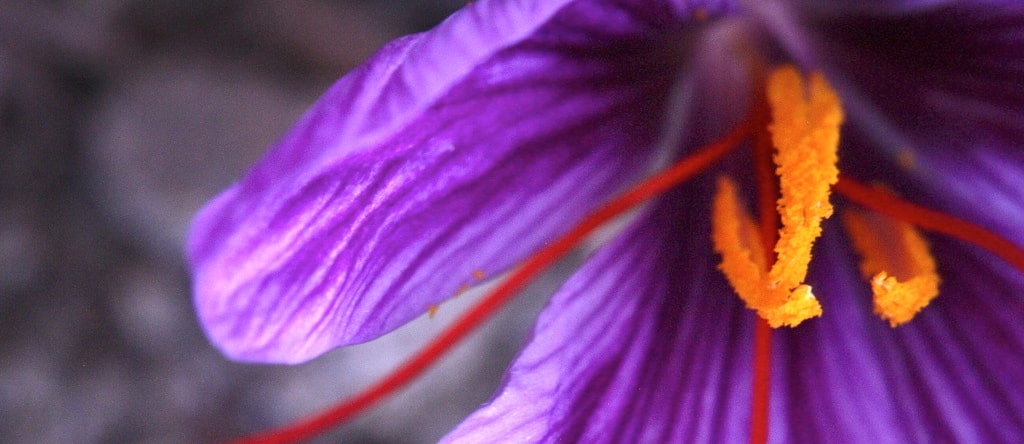Premenstrual Syndrome is among the most common health problems reported by women, affecting approximately 1 in 3, and there’s not much modern medicine has to offer. Ancient traditional medicine, though, in Asia and Persia used a spice called saffron to treat menstrual disorders. But what did they know–that was 3,500 years ago (in fact the earliest recorded use of any medicinal plant). Didn’t they realize you can’t really know anything unless it’s put through a double-blind, randomized, placebo controlled trial? Well it took 3,500 years, but now we finally have it. Watch my 2-min. video Saffron for the Treatment of PMS to see the results.
The spice saffron is composed of the female reproductive organs of the flower of the saffron crocus. Each flower just produces a few threads, such that you need 50,000 flowers to make a single pound of spice–enough flowers to fill a football field. No wonder it’s the most expensive spice in the world. Thankfully, the PMS study found benefits using a tiny amount. What if you could get away with using even less, though?
In my 2-min. follow-up video Wake Up and Smell the Saffron I profile one of the wildest studies I saw published last year that documents psychological benefits from even just the scent of saffron. How’s that for the power of plants? The study concludes: “Smelling saffron… is simple and easy, and it seems there is little side effect.”
For more flower power see my blog and videos on hibiscus tea (Better Than Green Tea) and chamomile tea (Chamomile Tea May Not Be Safe During Pregnancy). And hey, broccoli florets are just clusters of flower buds; see The Best Detox, Broccoli Versus Breast Cancer Stem Cells, and 26 other broccoli videos. Don’t like broccoli? Well, I have hundreds of videos on more than a thousand other topics.
–Michael Greger, M.D.
PS: If you haven’t yet, you can subscribe to my videos for free by clicking here and watch my full 2012 – 2015 presentations Uprooting the Leading Causes of Death, More than an Apple a Day, From Table to Able, and Food as Medicine.
